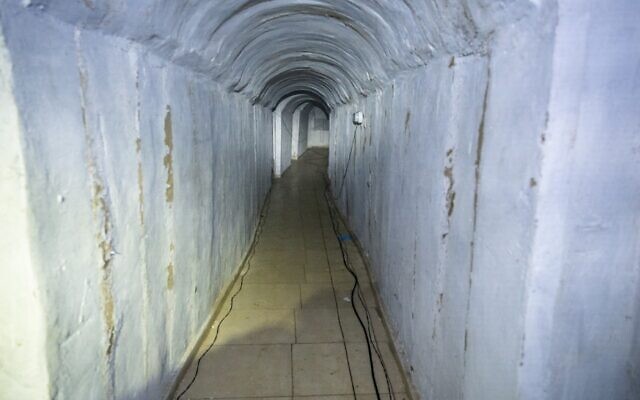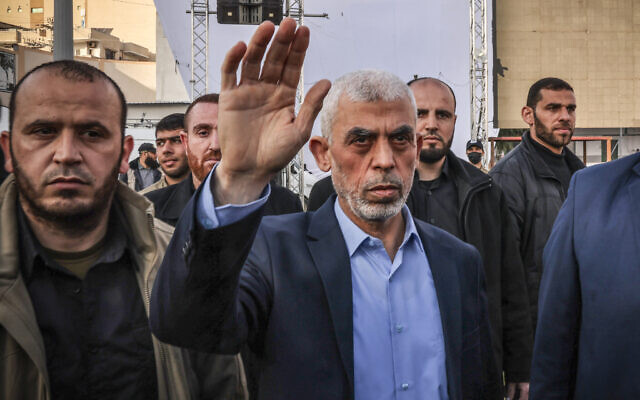



A 72-year-old woman held captive by Hamas for nearly 50 days told Channel 12 Wednesday that she was held at length in a dark, humid tunnel where she met Hamas’s Gaza leader Yahya Sinwar and helped pass the time with an informal lecture series by her knowledgeable fellow hostages.
Adina Moshe was taken captive from Kibbutz Nir Oz on Oct. 7, when thousands of Hamas terrorists attacked southern communities, slaughtering some 1,200 people and taking over 250 more hostage. She was freed in late November under a temporary truce and hostage release deal between Israel and Hamas that saw 105 people returned.
Moshe said terrorists raided the home she shared with her husband, David, who was shot in the leg. They snatched her out from the window of her house’s safe room and another terrorist went back in to shoot her husband dead, she said. Before being killed, he blew her a farewell kiss, she said.
She was then taken into Gaza on a motorcycle flanked by two armed terrorists. She said one of them painfully ripped an earring from her ear and that before he could swipe the other one she offered it up. He took all her jewelry and a passerby stole her glasses, she said, rendering her nearly blind for the duration of her captivity.
Moshe and a group of other hostages were marched into Hamas’s extensive tunnel network, walking for five hours down five underground flights through dark and airless shafts until they reached a subterranean room where they were told they’d be released in the coming days.
“We believed them. We believed that would be the first thing Israel would do,” she said.
It ended up taking nearly 50 until she was freed.
“I told all the guys, ‘We’ll be here for at least two months and not because of Hamas,’” she said, indicating she harbored anger toward Israel for not securing her release earlier.
Israeli leaders have argued they did everything possible to bring about the release of hostages, and that the November deal was only made possible by the massive offensive on Gaza that it launched following the Oct. 7 attacks.
Moshe spent her days with other hostages — men, women and children — as armed guards stood by. They ate small portions of canned goods and rice that dwindled with time, she said. The room was lit only by a small LED light.
To pass the time, she said three male hostages, including a Jewish history buff, a film connoisseur and an Arabic speaker, offered to give lectures to the other captives. When the lectures about the Holocaust became too hard to hear, they moved on to the persecution of Spanish Jews in the Middle Ages, another topic too difficult to process under the conditions. The three men are still in captivity.
Moshe, who speaks some Arabic, said she asked the gunmen to lower their rifles, saying they were scaring a child captive, and they agreed. She also asked to be able to walk through the tunnel, saying her heart condition required it, and they also agreed to that. It was on one of those walks that she discovered two male hostages held in cells because, they said, they had fought back against the terrorists.
From so deep underground, she did not hear Israel’s massive bombardment. But she said she could tell it was happening because it felt like the tunnels were moving.
At one point Sinwar visited Moshe and fellow hostages deep underground, she said.
“Hello. How are you? Everything OK?” Moshe said Sinwar told them in the Hebrew he had learned during a long incarceration in Israel. She said the hostages bowed their heads and did not respond. Another visit followed three weeks later, she said.
Moshe was shaking and broke down in tears during the interview. She said she is haunted by images of tunnels released by the army where she believes her fellow hostages have been taken.
“I have a feeling that some of them aren’t alive, because I know that they are no longer in the place where I was,” she said. “They took them from there. I’ve seen the pictures.”


